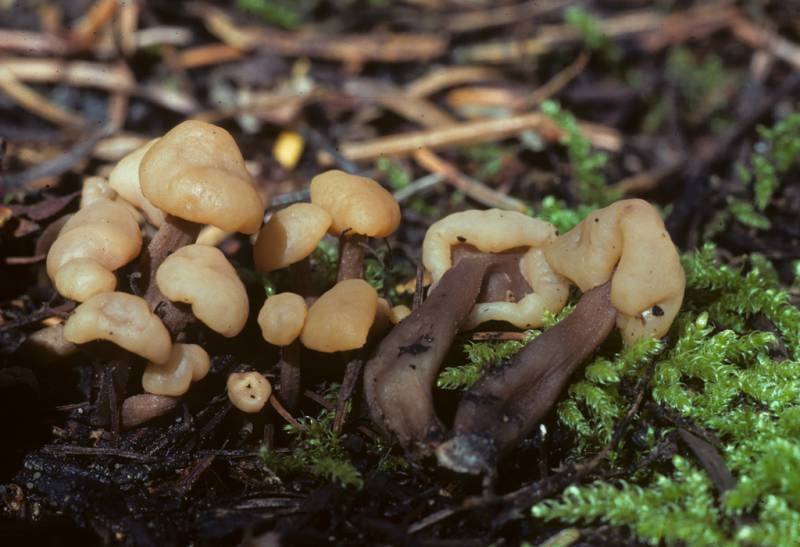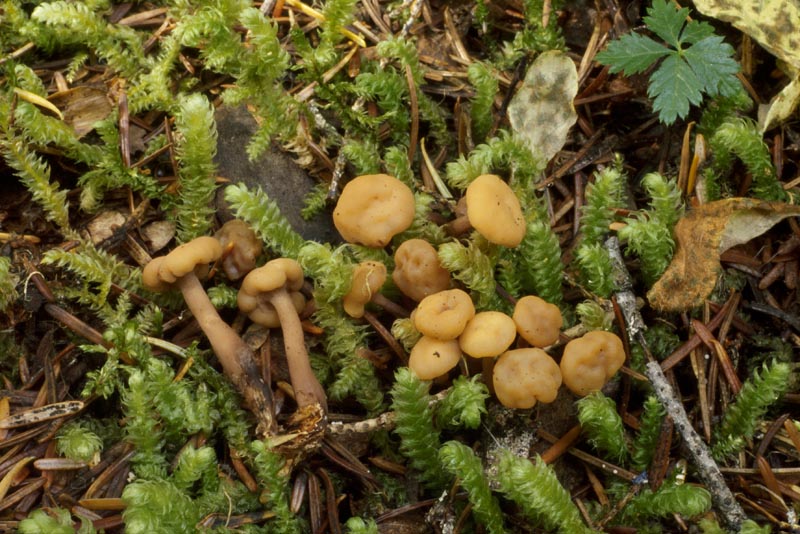Distribution: Widespread in North America, Europe, and Asia.
Conservation Status: Not of concern
Cudonia and the similar-looking Leotia species have well defined heads, rather than having the head merge gradually into the stipe. Cudonias are dull-colored, fleshy, and a bit tough, while leotias are brighter-colored, with viscid surfaces and firm, but jelly-like, flesh. C. circinans is pale brown, pinkish brown, or somewhat yellowish, and usually occurs in dense groups in conifer litter. It has long slender spores (28--46 x 2 µm) with multiple cross-walls at maturity. C. circinans is our most common cudonia. C. monticola is a mostly spring-fruiting, less yellowish species with shorter (18--24 µm) spores, normally with one or no cross-walls.
PNW Herbaria: Specimen records of Cudonia circinans in the Consortium of Pacific Northwest Herbaria database
CalPhotos: Cudonia circinans photos





